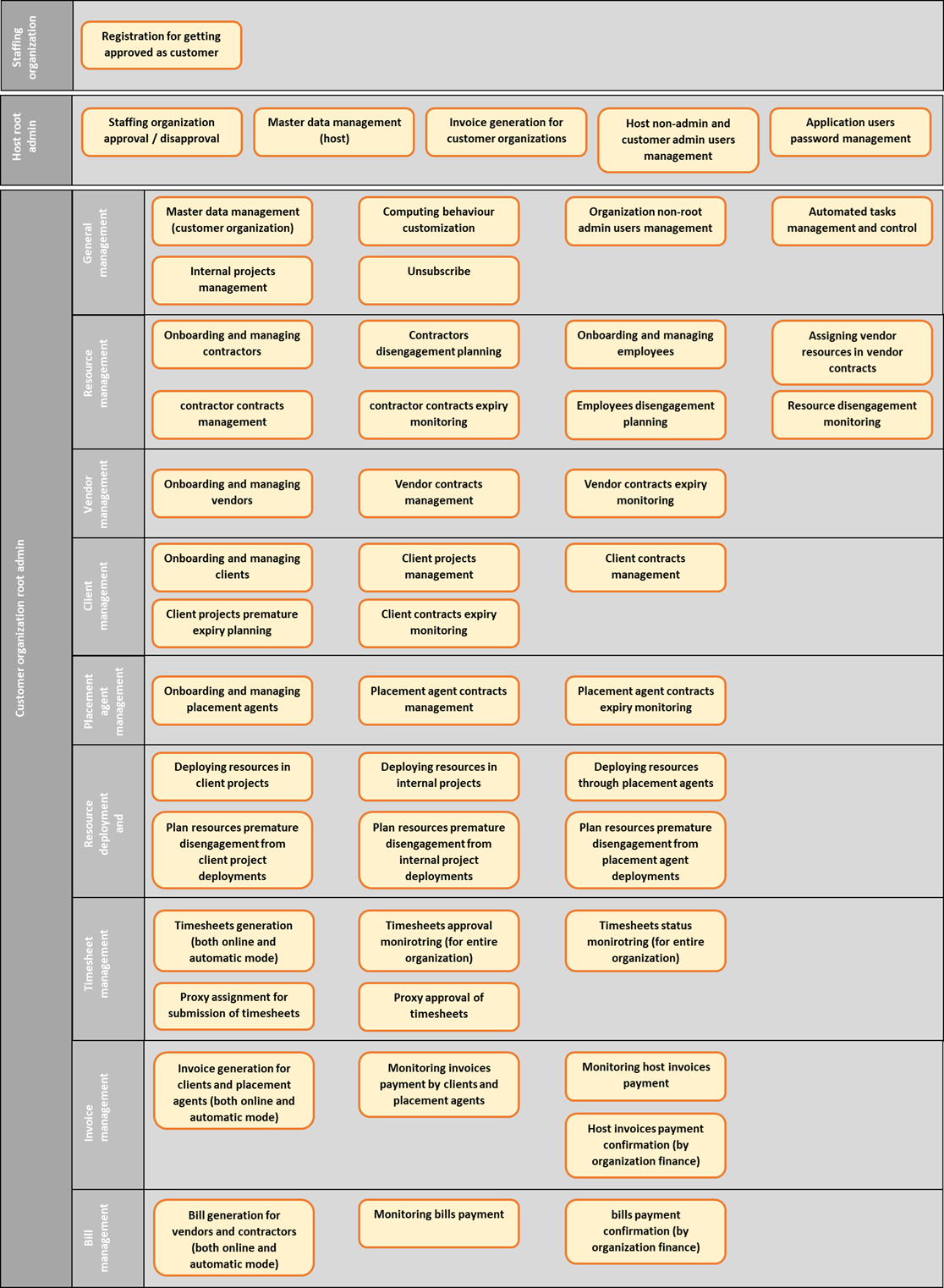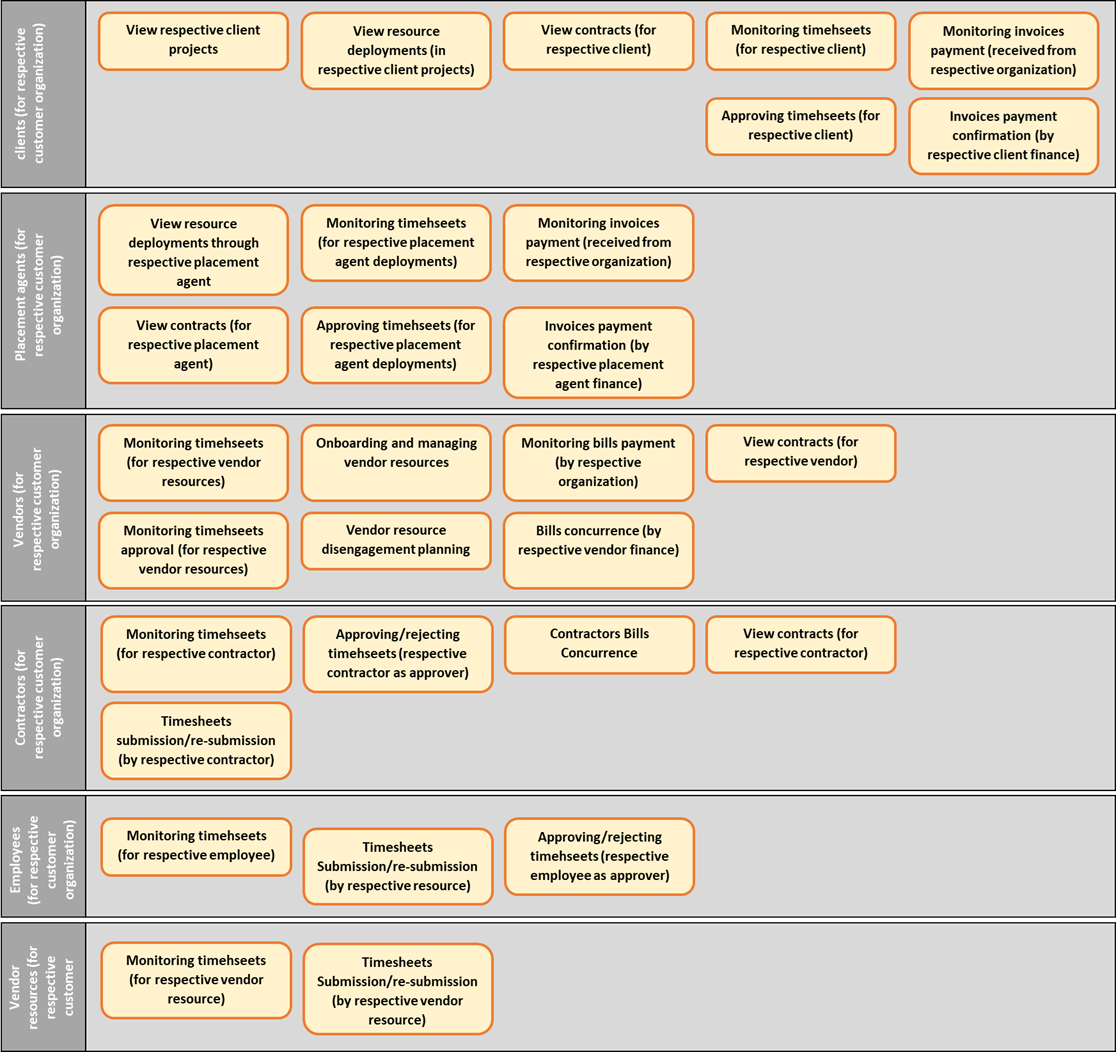Services
WFMA services are designed to empower both you, the business owner, and your customers to efficiently and seamlessly manage staffing operations through intuitive self-service portals.

For Your Customers
WFMA handles the full spectrum of staffing business functions, including:
- Resource management: onboarding in customer organizations' resource pool consisting of regular employees, contractors and resources from resource vendors
- Deployment of resources in clients' projects and through placement agents. Un-deployment of resources due to various reasons
- Contract management for the clients, placement agents, contractor resources, resource vendors
- Timesheet generation, submission, approval, rejection and re-submission
- Invoice generation and confirmation pf invoice payments
- Bill generation and bill payment confirmation

For the associated business entities of the customers
To operate efficiently and seamlessly in the staffing business, your customers need to engage with a range of external business entities. WFMA facilitates these interactions in an integrated, automated manner—minimizing or eliminating manual processes.:
- Clients: customers deploy resources to the client projects directly
- Placement agents: through whom customers deploy the resources
- Vendors: From whom customers take resources temporarily on business demand
- Regular employees: employees who are employed by the customers on regular payroll
- Contractors: Resources who get engaged with the customers on contract
- Vendor resources: the resources who are engaged from the resource vendors

For You – the Business Owner
As the business owner, you too utilize WFMA services to manage and oversee your operations through a dedicated self-service portal, giving you control, visibility, and operational efficiency.
Note: The diagram below illustrates a high-level overview of the key functions WFMA provides for you, your customers, and the associated business entities. While it covers the major capabilities, many advanced and intricate business functions—designed to support complex operational scenarios—are not included in the diagram.

